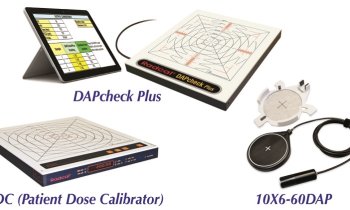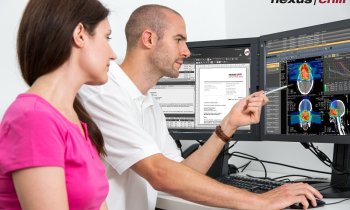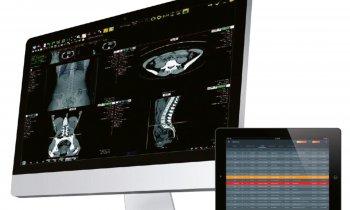Article • Interdisciplinary diagnostics
Crossing the radiology-pathology boundary
In diagnostics, there used to be a hard divide between radiology and pathology, where methods were largely considered incompatible with one another. However, to pave the way for next-generation diagnosis, Professor Regina Beets-Tan urged both sides to come out from their trenches and appreciate the synergies the fields have to offer.
Article: Wolfgang Behrends
© Andrey Kuzmin - stock.adobe.com
In her presentation at the European Congress of Radiology (ECR) in Vienna, the Chair of the Radiology Department at the Netherlands Cancer Institute in Amsterdam explained how imaging and pathology complement each other in the diagnostic pathway, becoming more than the sum of the parts.
True to the theme of “building bridges” – the ECR 2022 congress motto, where she served as president – Beets-Tan urged radiologists to attain a better knowledge of pathology. At a time when artificial intelligence (AI) is becoming increasingly proficient in analysing patterns in diagnostic images to detect disease and measure lesions, any radiologists who purely defines his working role over these tasks will soon find themselves at risk of being obsolete, she cautioned. Instead, the added value provided by radiologists will be in synthesizing and integrating imaging and pathology information, together with other biomarkers, to feed predictive models for clinical decision-making.
Seeing beyond the confines of radiology

Image source: ESR
To make a successful collaboration work, Beets-Tan said it is crucial to be aware of the respective strengths and weaknesses of radiology and pathology: For example, while MRI alone might not be reliable for identifying risk factors in rectal cancer,1 it is a valuable tool to discern between low- and high-risk patient populations for local recurrence.2 ‘This is information the clinical team can use,’ the expert said, as it gives a good indication which patients have so-called “ugly tumours” and require more than just surgery. On the other hand, the additional insight can be used to spare patients with low-risk tumours from additional radio- or chemotherapy and its debilitating effects.
Including molecular risk profiles for certain genetic mutations further contributes to effectively determine which patient will respond to which treatment approach. ‘This knowledge of the various biomarkers, including molecular markers, is relevant for any radiologist, as it will enhance their role as a valuable sparring partner in the multidisciplinary team,’ the expert appealed. Biomarkers such as RAS (KRAS, NRAS) and BRAF V600E mutations or MSI/dMMR status are part of any standard cancer workup – and radiologists should be able to understand their significance, even though it is not part of their specialty, she urged.
Image source: Unsplash/Alex Boyd (editing: HiE/Behrends)
Understand the markers and treatments to understand the image
This knowledge is especially relevant for radiologists, as it may help make sense of imaging results, Prof Beets-Tan said: For example, patients with the aforementioned mismatch repair-deficient (dMMR) colorectal cancer – which make up 5-10% of all CRC patients – will generally respond very well to immunotherapy. However, this is not reflected in the typical manner in diagnostic imaging, as cancerous masses may still show up on scans, even though the treatment is working.3
Recommended article

Article • New therapies, new questions
To understand an image is to understand the treatment
Conventional chemotherapy in oncology is increasingly yielding to new procedures such as targeted therapy and immunotherapy. This results in changes for radiologists because new procedures require familiarisation with certain imaging to ensure that the treatment process is interpreted correctly.
To drive home the synergistic potential between the disciplines, the expert talked about radiomics: ‘Radiology can play a complementary role here. Oncologists have already successfully modelled and used CT radiomics to assess the level of tumour-infiltrating T cells in the micro-environment of a tumour.’4 Current studies further explore these aspects, some even incorporating artificial intelligence to analyse CT results. ‘But again, we have to work together – radiology and pathology – to integrate all biomarkers and feed accurate prediction models of outcome, that will be leveraged by an AI,’ Beets-Tan looked ahead.
References:
- Chandramohan A et al.: Prognostic significance of MR identified EMVI, tumour deposits, mesorectal nodes and pelvic side wall disease in locally advanced rectal cancer; Colorectal Disease 2022
- Lahaye MJ et al.: Imaging for Predicting the Risk Factors—the Circumferential Resection Margin and Nodal Disease—of Local Recurrence in Rectal Cancer: A Meta-Analysis; Seminars in Ultrasound, CT and MRI 2005
- Chalabi M et al.: Neoadjuvant immunotherapy leads to pathological responses in MMR-proficient and MMR-deficient early-stage colon cancers; Nature Medicine 2020
- Sun R et al.: A radiomics approach to assess tumour-infiltrating CD8 cells and response to anti-PD-1 or anti-PD-L1 immunotherapy: an imaging biomarker, retrospective multicohort study; Lancet Oncology 2018
21.03.2024










